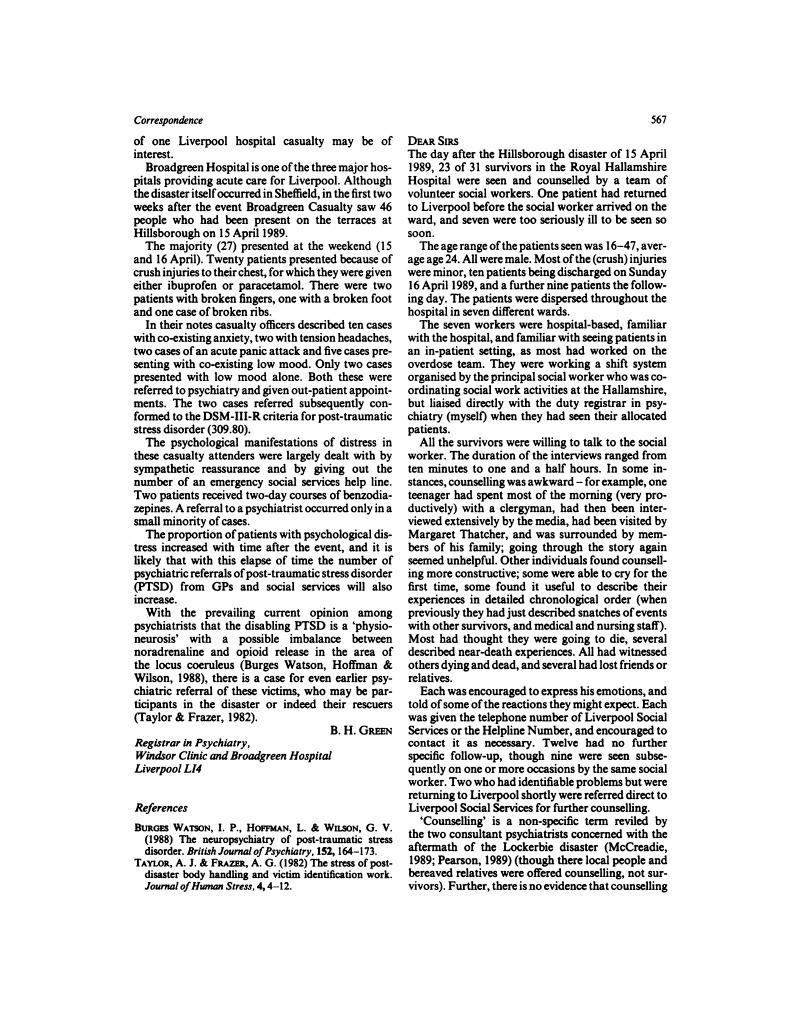No CrossRef data available.
Article contents
[No Title]
Published online by Cambridge University Press: 02 January 2018
Abstract
An abstract is not available for this content so a preview has been provided. As you have access to this content, a full PDF is available via the ‘Save PDF’ action button.

- Type
- Correspondence
- Information
- Creative Commons
- This is an Open Access article, distributed under the terms of the Creative Commons Attribution (CC-BY) license (http://creativecommons.org/licenses/by/4.0/), which permits unrestricted re-use, distribution, and reproduction in any medium, provided the original work is properly cited.
- Copyright
- Copyright © Royal College of Psychiatrists, 1989
References
Breslau, N. & Davis, C. G. (1987) Post-traumatic stress disorder: the stressor criterion. Journal of Nervous and Mental Disease, 175, 255–264.CrossRefGoogle ScholarPubMed
McCreadie, R. G. (1989) The Lockerbie air disaster: one psychiatrist's experience. Psychiatric Bulletin of the Royal College of Psychiatrists, 13, 120–122.Google Scholar
Pearson, I. B. (1989) Personal View: Lockerbie. British Medical Journal, 298, 127–128.Google Scholar
Singh, B. & Raphael, B. (1981) Postdisaster morbidity of the bereaved: a possible role for preventative psychiatry. Journal of Nervous and Mental Disease, 169, 203–212.CrossRefGoogle Scholar





eLetters
No eLetters have been published for this article.